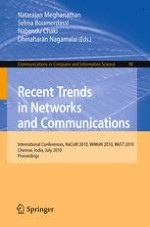The Second International Conference on Networks and Communications (NeCoM 2010), the Second International Conference on Wireless and Mobile Networks (WiMoN 2010), and the Second International Conference on Web and Semantic Technology (WeST 2010) were held in Chennai, India, during July 23–25, 2010. They attracted many local and int- national delegates, presenting a balanced mixture of intellects from the East and from the West. The goal of these conferences is to bring together researchers and practitioners from academia and industry to focus on understanding computer networks, wireless networks, mobile networks and the Web, semantic technologies and to establish new collaborations in these areas. Authors are invited to contribute to the conference by submitting articles that illustrate research results, projects, survey work and industrial experiences describing significant advances in the areas of all computer networks and Semantic Web technologies. The NeCoM 2010, WiMoN 2010 and WeST 2010 committees rigorously invited submissions for many months from researchers, scientists, engineers, students and practitioners related to the relevant themes and tracks of the workshop. This effort guaranteed submissions from an unparalleled number of internationally recognized top-level researchers. All the submissions underwent a strenuous peer-review process which comprised expert reviewers. These reviewers were selected from a talented pool of Technical Committee members and external reviewers on the basis of their expertise. The papers were then reviewed based on their contributions, technical c- tent, originality and clarity.
